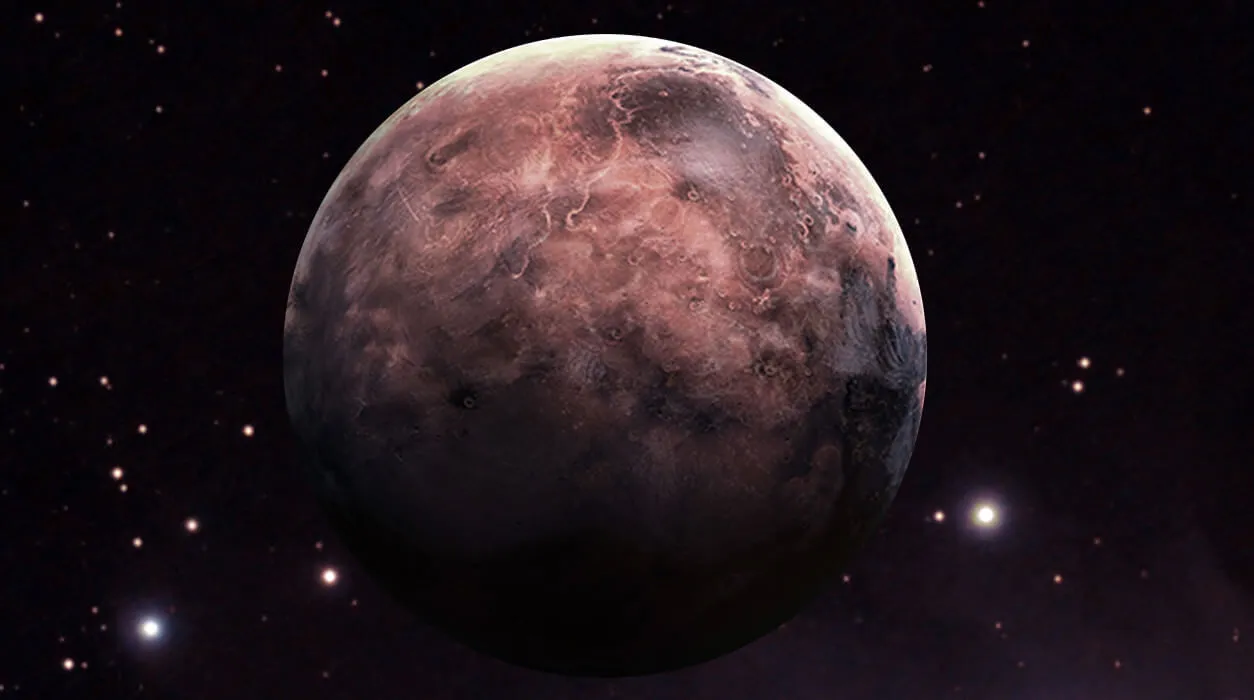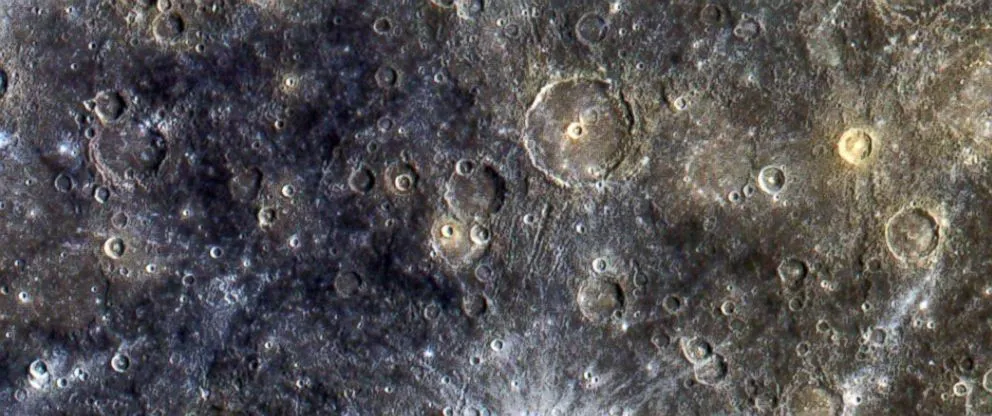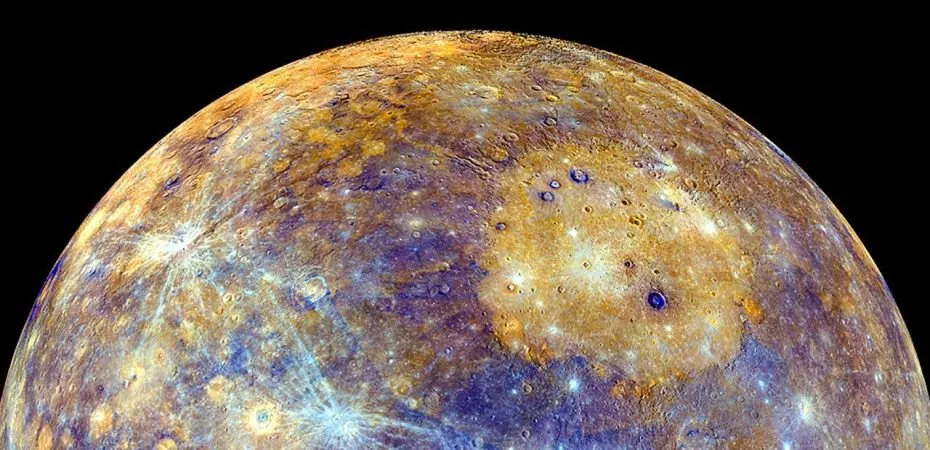He is close to the sun, he is extremely hot and he is also extremely cold, and it is precisely this circumstance that makes him somehow Doctor Jekyll and Mister Hyde among the planets.
Until 2006 Pluto was the owner of the title smallest planet in our solar system. But when Pluto was degraded to a dwarf planet, this title went to Mercury. But the title of the smallest planet isn't really that cool, is it?
Mercury, with its diameter of just under 4880 kilometers, has a very elliptical orbit around the sun. It orbits it between 0.387 and 0.403 astronomical units and with an average distance of 58 million kilometers to the sun it is also the closest to the sun. Its 59-day rotation around its own axis is coupled to the 88-day orbit around the sun. It thus rotates exactly three times around its axis, in the same time as it orbits the sun twice.
Mercury is so close to the sun, one could come up with the idea that its surface is always incredibly hot. Wrong thought. Although during the day it actually gets up to plus 430 degrees but at night you would freeze at minus 170 degrees. Mercury with its two sides is somehow the Doctor Jekyll and Mister Hyde among the planets. The reason for the temperature differences is that Mercury has no atmosphere to store the heat at night.
The surface of Mercury is covered with craters. Many have names of celebrities like Beethoven, Homer, Rembrandt etc. and the largest crater has a diameter of incredible 716 kilometers! Since Mercury's surface is very similar to our moon, scientists assume that in earlier times it was the moon of Venus, but by a cosmic catastrophe both onjects were separated from each other.
The core of Mercury accounts for almost three quarters of the diameter of Mercury itself. But above all, it is incredibly heavy and consists almost entirely of iron. This is why the other idea exists, in which many scientists believe, that the entire planet Mercury is only a remaining core of another planet, which was destroyed in a collision.
We don't really know much about Mercury. Sending a spacecraft to Mercury is particularly difficult because Mercury is the planet closest to the sun. This means that a probe is exposed to extreme temperatures and also to native gravity twice. But in 1974 it had reached the probe Mariner 10 Mercury and in 2011 Messenger swung into orbit. After 6.5 years in operation, it was then dropped onto the 399 kilometer Shakespeare crater, which in turn created a 16 meter crater.
Like all other planets, Mercury takes its name from Roman mythology. There he was called Mercurius and was the god of trade. In Greek, Mercury can be equated with Hermes, the messenger of the gods.





